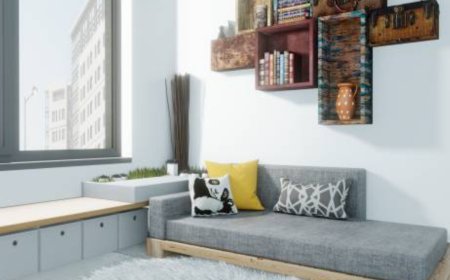Common Types of Household Mold and How to Identify Them
Learn how to spot the most common types of household mold, including black mold, and when to call professionals like Home Doctor Restoration.

Mold is more than an ugly stain on your wall or ceilingits a warning sign. A hidden intruder that can damage your homes structure and threaten your health, mold is not something to take lightly. Whether you're a homeowner, landlord, or renter, knowing how to identify common types of mold can help you act quickly and avoid costly repairs.
In this blog, well walk you through the most common types of household mold, what they look like, where they hide, and how to identify them. Plus, well explain when its time to bring in professionals like Home Doctor Restoration to handle the cleanup safely and effectively.
What Is Mold, Exactly?
Mold is a type of fungus that thrives in moist environments. It reproduces by releasing tiny spores into the air. When those spores land on damp surfaces, they start to grow. Thats why mold loves areas like basements, bathrooms, kitchens, and atticsanywhere that water might leak or humidity levels stay high.
While there are thousands of mold species, only a handful are commonly found in American homes. Let's dive into the types youre most likely to encounter.
1. Stachybotrys Chartarum (Black Mold)
Nickname: Toxic black mold
Color: Dark green or black
Texture: Slimy or wet
Common Areas: Damp drywall, insulation, wood, or ceilings that have suffered water damage
How to Identify It:
Black mold is often found in places that have had water leaks or flooding. It grows on materials with high cellulose content like wood, paper, and drywall. If you notice a musty odor and slimy black patches on walls or ceilings, you might be dealing with black mold.
Why Its a Problem:
This mold type can produce mycotoxins, which may cause respiratory problems, headaches, fatigue, and even memory issues when exposure is prolonged.
? Do not attempt to remove black mold yourself. Call in a professional like Home Doctor Restoration to inspect and remediate the affected area safely.
2. Aspergillus
Nickname: The common household mold
Color: Usually white, yellow, or green with a powdery texture
Common Areas: HVAC systems, insulation, walls, and dusty areas
How to Identify It:
Aspergillus often appears as fuzzy or powdery patches and may have multiple colors depending on the strain. It thrives in warm, damp climates, which makes it very common in kitchens and bathrooms.
Why Its a Problem:
Some species of Aspergillus can cause allergic reactions, sinus infections, and lung issuesespecially in people with weakened immune systems or asthma.
3. Cladosporium
Nickname: The sneaky mold
Color: Olive-green, brown, or black
Common Areas: Wood, carpets, fabrics, HVAC ducts
How to Identify It:
Cladosporium has a suede-like texture and prefers cooler areas than many other molds. Its often found on fabric, such as curtains or upholstered furniture, and on painted surfaces.
Why Its a Problem:
This mold can trigger asthma attacks and skin rashes. Even if it looks harmless, its best to get it checked and removed by a mold remediation professional.
4. Penicillium
Nickname: The quick spreader
Color: Blue, green, or white
Common Areas: Mattresses, wallpaper, insulation, and water-damaged materials
How to Identify It:
Penicillium grows rapidly and spreads easily. It has a velvety texture and a strong, musty smell. If you see colorful mold on your basement walls or attic insulation, you might be dealing with this species.
Why Its a Problem:
Although its the source of the antibiotic penicillin, in homes, Penicillium can cause sinus congestion, respiratory issues, and allergic reactions.
5. Alternaria
Nickname: The allergy trigger
Color: Dark green or brown with a velvet-like texture
Common Areas: Showers, bathtubs, sinks, and windowsills
How to Identify It:
Alternaria usually appears after water damage or in consistently humid spaces. Youll often spot it around the edges of bathroom tiles or in poorly ventilated spaces.
Why Its a Problem:
This mold type is a well-known allergen and can worsen asthma or allergy symptoms. It spreads quickly and can be tough to fully eliminate without professional help.
6. Chaetomium
Nickname: The mold with a musty odor
Color: Starts white, turns gray or brown
Common Areas: Water-damaged drywall, wallpaper, baseboards
How to Identify It:
Chaetomium has a cotton-like texture and produces a strong, musty smell thats hard to ignore. If your home has experienced water damage and now has strange odors, you might be dealing with this mold.
Why Its a Problem:
Chaetomium may cause skin and nail infections in some people. Its also a red flag for serious water damage behind walls or floors.
Where Mold Hides in Your Home
Mold doesnt always grow in obvious spots. It often lurks behind walls, under carpets, or inside ventilation systems. Here are some key places to check:
-
Basements Dark, damp, and poorly ventilated
-
Bathrooms Especially behind tile or under sinks
-
Kitchens Around dishwashers, under the sink, or in the pantry
-
Laundry rooms Around water hookups and behind machines
-
Attics Roof leaks and poor airflow are common problems
-
Windows Condensation can create the perfect breeding ground
If you're ever unsure, its wise to consult professionals like Home Doctor Restoration for a thorough inspection and peace of mind.
Signs You Might Have Mold
Even if you cant see it, mold might still be hiding in your home. Here are some red flags:
-
Persistent musty smell
-
Discoloration or staining on walls or ceilings
-
Warped wood or peeling paint
-
Respiratory symptoms like coughing or sneezing indoors
-
High humidity levels (above 60%)
When to Call in the Pros
Trying to clean mold with bleach or household cleaners might work temporarily, but it doesnt solve the root problemmoisture. Without addressing water issues, mold will return. Plus, cleaning some types like Stachybotrys (black mold) can release toxic spores into the air, making things worse.
Home Doctor Restoration has the tools, protective equipment, and expertise to safely identify and eliminate moldwhile ensuring it wont come back. Theyll:
-
Identify the type of mold and extent of contamination
-
Use HEPA filtration and safe containment methods
-
Remove affected materials when necessary
-
Repair and seal any water leaks or vulnerabilities
-
Ensure your indoor air is clean and safe again
Preventing Mold in the First Place
Here are some practical steps to keep mold away:
? Control humidity Use dehumidifiers and exhaust fans
? Fix leaks fast Even small drips can feed mold
? Ventilate properly Especially in kitchens and bathrooms
? Clean regularly Especially behind appliances or in corners
? Dry out wet areas within 2448 hours
Prevention is always easierand cheaperthan remediation.
Final Thoughts
Mold is more than a cosmetic issueits a signal that somethings not right in your home. Knowing how to identify the most common types of household mold is your first step toward a healthier, safer living space. And when in doubt, dont go it alone.
Professionals like Home Doctor Restoration can make the entire mold remediation process safer, faster, and more effective. Whether you suspect mold or want to prevent it, taking action now can save you money and stress later.
FAQs
Q1: Can I use bleach to remove mold?
A: While bleach may kill surface mold on non-porous materials, it doesnt penetrate deep into porous surfaces like drywall or wood. In many cases, bleach can actually make the problem worse. Its best to consult a professional like Home Doctor Restoration for proper mold removal.
Q2: How can I tell the difference between mildew and mold?
A: Mildew is usually flat and powdery, appearing gray or white. It grows on the surface of moist areas like shower tiles. Mold is usually darker, fuzzier, and can grow beneath the surfacecausing structural damage and health issues.
Q3: How long does mold removal take?
A: It depends on the extent of the problem. Small jobs may take just a few hours, while larger infestations could take several days. Home Doctor Restoration can assess your situation and give you a clear timeline and cost estimate.







































